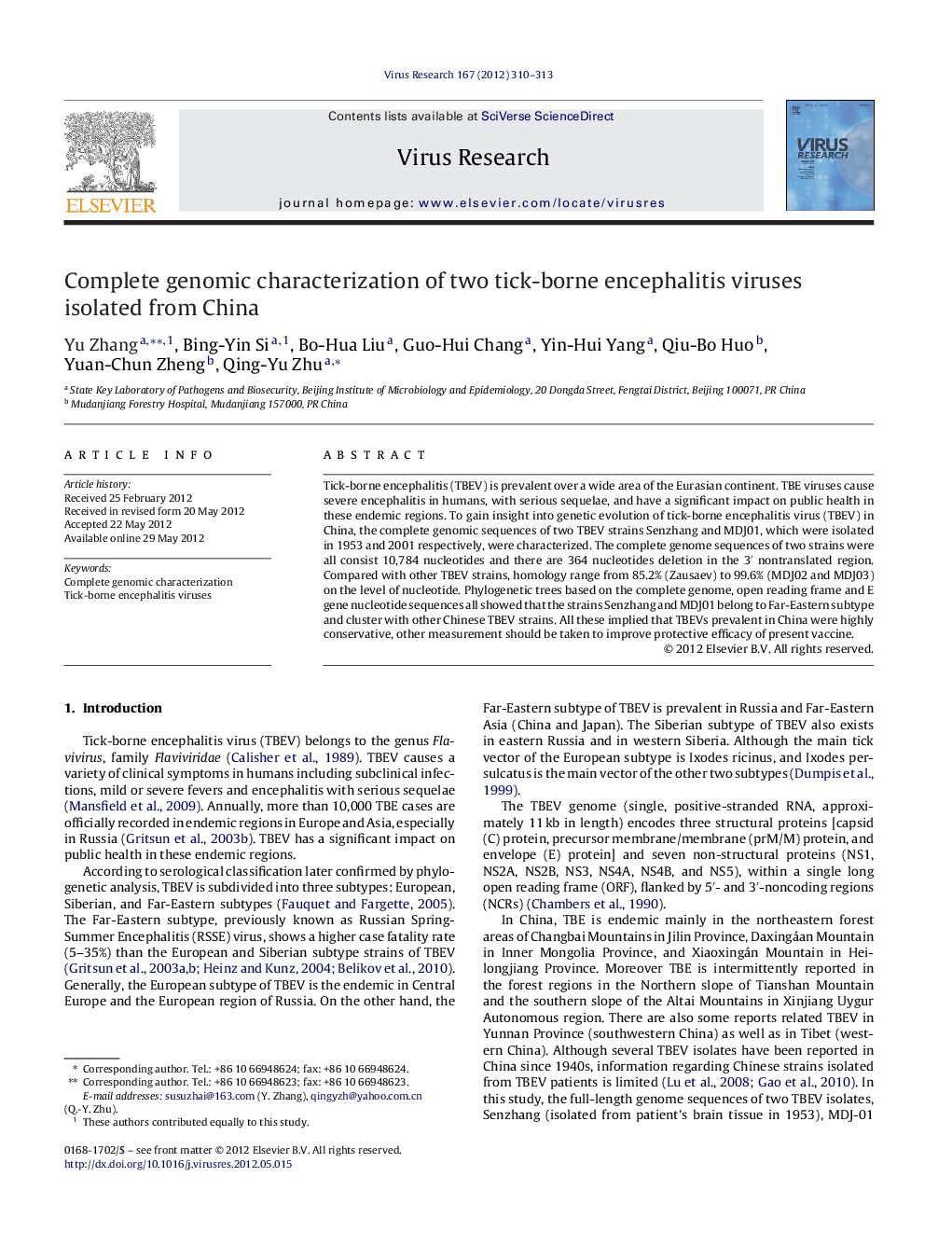| Article ID | Journal | Published Year | Pages | File Type |
|---|---|---|---|---|
| 6143076 | Virus Research | 2012 | 4 Pages |
Abstract
Tick-borne encephalitis (TBEV) is prevalent over a wide area of the Eurasian continent. TBE viruses cause severe encephalitis in humans, with serious sequelae, and have a significant impact on public health in these endemic regions. To gain insight into genetic evolution of tick-borne encephalitis virus (TBEV) in China, the complete genomic sequences of two TBEV strains Senzhang and MDJ01, which were isolated in 1953 and 2001 respectively, were characterized. The complete genome sequences of two strains were all consist 10,784 nucleotides and there are 364 nucleotides deletion in the 3â² nontranslated region. Compared with other TBEV strains, homology range from 85.2% (Zausaev) to 99.6% (MDJ02 and MDJ03) on the level of nucleotide. Phylogenetic trees based on the complete genome, open reading frame and E gene nucleotide sequences all showed that the strains Senzhang and MDJ01 belong to Far-Eastern subtype and cluster with other Chinese TBEV strains. All these implied that TBEVs prevalent in China were highly conservative, other measurement should be taken to improve protective efficacy of present vaccine.
Related Topics
Life Sciences
Immunology and Microbiology
Virology
Authors
Yu Zhang, Bing-Yin Si, Bo-Hua Liu, Guo-Hui Chang, Yin-Hui Yang, Qiu-Bo Huo, Yuan-Chun Zheng, Qing-Yu Zhu,
